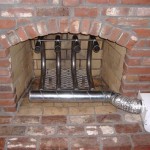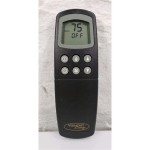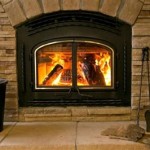Electric Fireplaces: A Cost-Effective Heating Solution
Electric fireplaces have emerged as a popular alternative to traditional wood-burning or gas fireplaces. They offer a combination of aesthetic appeal, ease of installation, and relatively low operational costs. Understanding the factors that contribute to their cost-effectiveness requires a comprehensive examination of their purchase price, installation expenses, energy consumption, maintenance requirements, and overall lifespan.
The initial investment is a significant factor influencing the perceived cost-effectiveness of an electric fireplace. Electric fireplaces generally have a lower purchase price compared to their wood-burning or gas counterparts. The price range can vary considerably depending on the size, style, features, and brand of the fireplace. Wall-mounted units, for example, are often less expensive than electric fireplace inserts designed to be placed within an existing fireplace structure. Similarly, models with advanced features such as realistic flame effects, built-in thermostats, and remote controls may command a higher price.
Installation costs associated with electric fireplaces are typically minimal. Unlike traditional fireplaces that require extensive venting and structural modifications, electric fireplaces can usually be installed with relative ease. Wall-mounted units often only require securing the unit to the wall and plugging it into a standard electrical outlet. Fireplace inserts may require some minor modifications to the existing fireplace opening, but the overall complexity and cost of installation are significantly lower than those associated with other types of fireplaces. In many cases, a homeowner with basic DIY skills can perform the installation themselves, further reducing costs.
Energy Consumption and Operating Costs
The ongoing cost of operating an electric fireplace is primarily determined by its energy consumption. Electric fireplaces use electricity to generate heat, and the amount of electricity consumed will depend on the fireplace's wattage rating and the duration of use. Most electric fireplaces are equipped with adjustable heat settings, allowing users to control the amount of heat produced and, consequently, the amount of electricity consumed. Operating the fireplace at a lower heat setting will reduce energy consumption but will also result in less heat output. It is important to consider the size of the room being heated when selecting an electric fireplace. A larger room will require a more powerful fireplace to achieve the desired level of warmth, which will translate into higher energy consumption. Understanding the local electricity rates and the fireplace's wattage rating is essential for estimating the monthly operating costs.
Compared to gas or wood-burning fireplaces, electric fireplaces offer the advantage of heating a specific area rather than the entire house. This zone heating capability can contribute to significant energy savings, especially in larger homes where only certain rooms need to be heated. Instead of turning up the central heating system, an electric fireplace can be used to provide supplemental heat to the room being occupied, reducing the overall energy demand and associated costs. Furthermore, many electric fireplaces come equipped with thermostats that automatically regulate the heat output to maintain a consistent temperature, preventing over-heating and minimizing energy waste. This feature further enhances their cost-effectiveness compared to older, less efficient heating systems.
The efficiency of electric fireplaces is also a factor that influences their operating costs. Electric fireplaces are generally considered to be highly efficient, converting nearly 100% of the electrical energy they consume into heat. This means that very little energy is wasted, maximizing the amount of heat produced per unit of electricity consumed. In contrast, wood-burning fireplaces can be less efficient, with a significant portion of the heat escaping through the chimney. The high efficiency of electric fireplaces contributes to their overall cost-effectiveness by minimizing energy waste and maximizing heat output.
Maintenance and Lifespan Considerations
Maintenance requirements and lifespan are crucial factors in assessing the long-term cost-effectiveness of any appliance, including electric fireplaces. Electric fireplaces require minimal maintenance compared to wood-burning or gas fireplaces. There is no need to clean ashes, sweep chimneys, or schedule regular inspections. The primary maintenance task typically involves occasional cleaning of the fireplace's exterior surfaces to remove dust and debris. The absence of complex mechanical components also reduces the likelihood of breakdowns and the need for costly repairs. This low-maintenance aspect of electric fireplaces translates into significant cost savings over their lifespan.
The lifespan of an electric fireplace can vary depending on the quality of the unit and the frequency of use. However, with proper care and maintenance, a well-built electric fireplace can last for many years. The heating element is typically the component most likely to require replacement over time, but these replacements are generally relatively inexpensive and easy to install. The longevity of electric fireplaces contributes to their cost-effectiveness by minimizing the need for frequent replacements and ensuring a longer return on investment. The extended lifespan, coupled with low maintenance requirements, makes electric fireplaces a financially sensible choice for many homeowners.
The absence of a chimney or venting system also contributes to the cost-effectiveness of electric fireplaces. Traditional fireplaces require regular chimney inspections and cleaning to prevent the build-up of creosote, a flammable substance that can pose a fire hazard. These inspections and cleaning services can be costly, adding to the overall cost of owning a wood-burning fireplace. With electric fireplaces, there is no need to worry about chimney maintenance, eliminating these associated expenses and further enhancing their cost-effectiveness.
Safety and Environmental Impact
Safety and environmental considerations also contribute to the overall cost-effectiveness analysis of electric fireplaces. Electric fireplaces are inherently safer than wood-burning or gas fireplaces. They do not produce open flames, eliminating the risk of sparks, embers, and accidental fires. The absence of combustion also means that electric fireplaces do not emit harmful pollutants into the air, improving indoor air quality and reducing the risk of respiratory problems. These safety and environmental benefits can translate into cost savings in the long run by reducing the likelihood of accidents, health problems, and potential property damage. The improved safety profile also reduces the need for costly safety measures, such as fire extinguishers and smoke detectors, further contributing to their cost-effectiveness.
The environmental friendliness of electric fireplaces is another factor that enhances their appeal as a cost-effective heating solution. Electric fireplaces do not burn wood or fossil fuels, meaning they do not contribute to deforestation, greenhouse gas emissions, or air pollution. While electricity generation can have its own environmental impacts, the overall environmental footprint of electric fireplaces is generally lower than that of traditional fireplaces. As renewable energy sources become more prevalent and the electricity grid becomes cleaner, the environmental benefits of electric fireplaces will further increase, making them an even more attractive and cost-effective option for environmentally conscious consumers.
The ability to control the heat output and only heat the areas that are being used also minimizes energy consumption and environmental impact. Users can adjust the thermostat to maintain a comfortable temperature without overheating the room, reducing energy waste and greenhouse gas emissions. This targeted heating approach makes electric fireplaces a more efficient and environmentally responsible heating option compared to central heating systems that heat the entire house regardless of occupancy.
In summary, the cost-effectiveness of electric fireplaces stems from a combination of factors, including lower purchase prices, minimal installation costs, efficient energy consumption, low maintenance requirements, long lifespans, enhanced safety features, and reduced environmental impact. These advantages make electric fireplaces an attractive and financially sound heating solution for a wide range of homeowners.

How Much Does An Electric Fireplace Cost 2024 Data Angi

Are Electric Fireplaces Energy Efficient We Love Fire

The Rise Of Electric Fireplace A Cost Effective Alternative

Are Electric Fireplaces Energy Efficient Direct Learning Center

ᑕ❶ᑐ How Much Does It Cost To Run An Electric Fireplace

How Much Does It Cost To Run Electric Fireplace In 2024

Are Electric Fireplaces Expensive To Operate Dimplex

ᑕ❶ᑐ Energy Efficient Electric Fireplaces For Your Home

Granby 45 75 In W Stacked Stone Effect Electric Fireplace White Hd90671 The Home Depot

Electric Vs Gas Fireplaces Energy House
Related Posts








